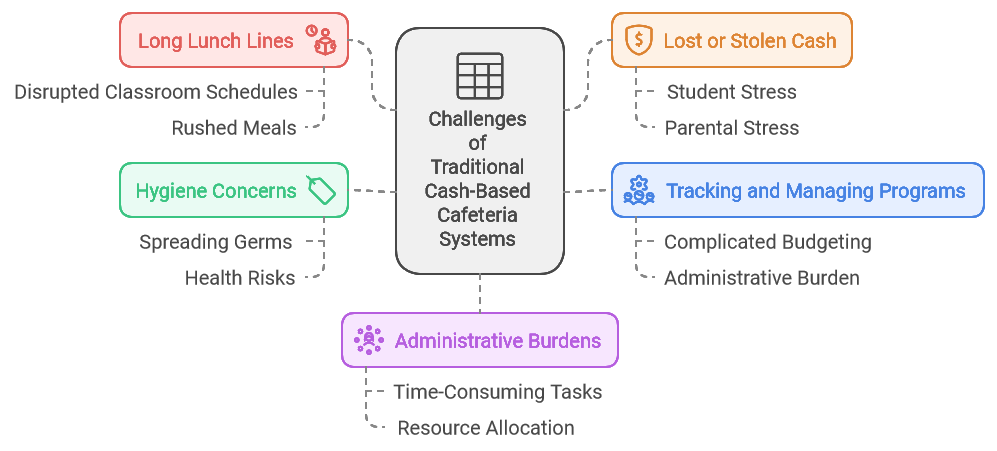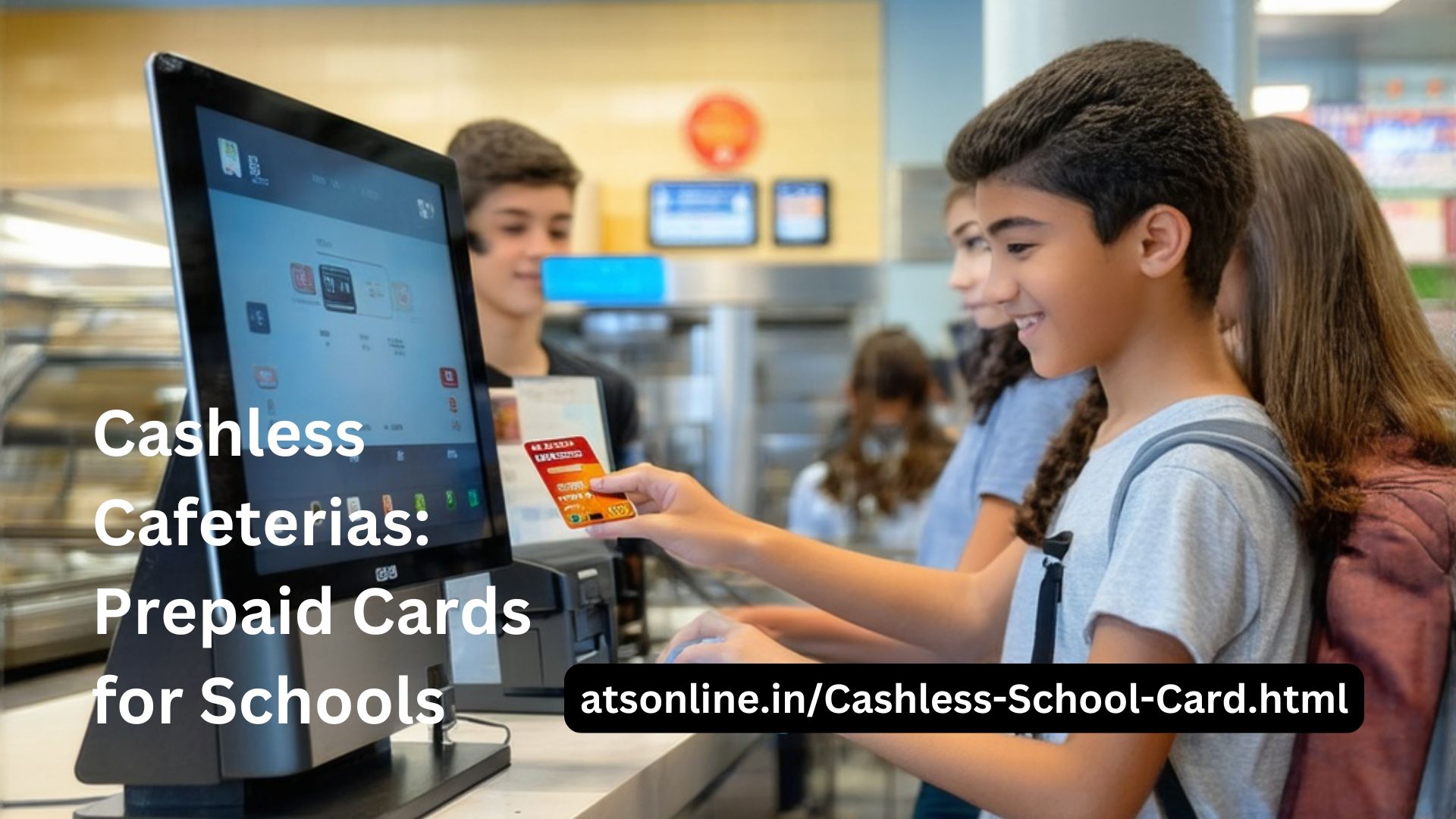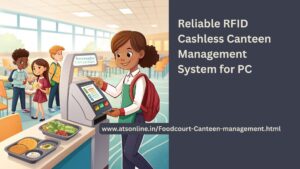Empower your school with efficient cashless cafeterias. Prepaid cards streamline payments and improve student satisfaction.
The lunch bell rings, and a familiar scene unfolds in school cafeterias across the country: long, winding lines of students clutching crumpled cash, patiently (or impatiently!) waiting to purchase their meals. This traditional system, while familiar, presents a host of challenges for schools, students, and parents alike. Lost money, time wasted in lines, and the administrative burden of managing cash are just a few of the issues that plague cash-based cafeterias. Fortunately, a modern solution is emerging: cashless cafeterias. At the heart of this transformative change are prepaid cards, offering a streamlined, secure, and efficient way to manage school lunch payments. This blog post delves into the crucial role of prepaid cards in empowering schools with cashless cafeteria solutions, examining the benefits, addressing common concerns, and providing a roadmap for implementation.
Why Ditch the Cash? Problems with Traditional Cafeteria Systems
Traditional cash-based cafeteria systems present numerous challenges that impact various aspects of school operations. Let’s explore some of the key problems:
- Long Lunch Lines and Wasted Time: Perhaps the most visible issue is the length of lunch lines. Students spend valuable time waiting to pay, reducing their actual lunch break and potentially leading to rushed meals. This wasted time also disrupts classroom schedules and can contribute to student frustration.
- Lost or Stolen Cash: Handling cash creates inherent security risks. Students can lose their lunch money, and the opportunity for theft, both from students and within the cafeteria itself, is present. This can create stressful situations for students and parents and necessitate time-consuming investigations.
- Difficulties Tracking Student Spending and Managing Free/Reduced Meal Programs: Managing cash makes it challenging to accurately track student spending patterns. This can complicate budgeting for families and make it difficult for schools to administer free and reduced meal programs efficiently. Manually processing cash transactions for these programs adds significant administrative burden.
- Hygiene Concerns: Cash is inherently unsanitary. It passes through countless hands, potentially spreading germs and contributing to illness. In today’s health-conscious environment, minimizing contact with shared surfaces is a priority.
- Administrative Burdens: Counting, sorting, and depositing cash requires significant administrative time and resources. School staff must dedicate valuable time to these tasks, diverting their attention from other essential responsibilities.
These challenges collectively highlight the inefficiencies and risks associated with cash-based cafeterias. The need for a more modern, streamlined, and secure solution is clear.

Cashless Cafeteria Benefits: How Prepaid Cards Empower Schools
Prepaid cards offer a powerful solution to the challenges posed by traditional cash-based cafeterias. By transitioning to a cashless system utilizing prepaid cards, schools can experience a range of significant benefits:
A. Streamlined Transactions and Reduced Wait Times (Faster Lunches, Happier Students)
Prepaid cards significantly expedite the checkout process. Instead of fumbling with cash, students simply swipe or tap their cards, completing transactions in seconds. This dramatically reduces wait times, leading to shorter lunch lines and increased student satisfaction. Students have more time to enjoy their meals and socialize, and the overall lunch period becomes more efficient and less stressful.
B. Enhanced Financial Security (Secure Payments, Peace of Mind)
Prepaid cards eliminate the risk of lost or stolen cash. The funds are securely stored electronically, and if a card is lost or stolen, it can be easily deactivated and replaced. This provides peace of mind for both parents and students, knowing their lunch money is safe. Many prepaid card systems also offer online portals where parents can monitor transactions and set spending limits, adding another layer of security and control.
C. Simplified Meal Program Management (Effortless Administration of Free/Reduced Meals)
Prepaid card systems simplify the administration of free and reduced meal programs. Eligibility and meal distribution can be tracked electronically, reducing paperwork and administrative overhead. This streamlined process ensures that eligible students receive their meals without stigma or delays, while also providing schools with accurate data for reporting and reimbursement.
D. Improved Hygiene and Safety (Healthier Cafeterias with Contactless Payments)
By minimizing cash handling, prepaid cards contribute to a more hygienic cafeteria environment. Contactless payment options further enhance sanitation by reducing the need for students and staff to touch shared surfaces. This is particularly important in preventing the spread of germs and promoting overall health and well-being. Removing large amounts of cash from the premises also enhances safety and security within the school.
E. Better Budgeting and Spending Control (Empowering Students and Parents with Financial Literacy)
Prepaid cards can be a valuable tool for teaching financial literacy. Students and parents can track spending online, set budgets, and monitor account balances. This provides an opportunity for families to discuss responsible money management and empower students to make informed decisions about their spending habits.
Getting Started with Cashless School Cafeterias: A Step-by-Step Guide
Selecting the Ideal Partner for Your School’s Needs
Choosing the right prepaid card provider is crucial for a successful transition to a cashless cafeteria. Key considerations include the provider’s reputation, integration capabilities, reporting features, and customer support. Advance Technology Systems offers comprehensive solutions tailored to meet the unique needs of schools.
Seamless Integration for Smooth Operation
Integrating prepaid cards with existing POS and student information systems ensures smooth operation. This integration streamlines data management, enabling seamless tracking of student accounts and transactions.
Ensuring a Smooth Transition for Everyone
Effective communication and training are essential for a successful transition to a cashless system. Schools should provide resources and support to educate students, parents, and staff about the new system. Clear communication strategies will help address any concerns and ensure a smooth adoption process.
Debunking Myths About School Prepaid Cards: Your Questions Answered
Protecting Student Information: Our Commitment to Security
Data privacy and security are top priorities when implementing prepaid card systems. Reputable providers like Advance Technology Systems employ robust security measures to protect student information. Encryption, secure data storage, and compliance with privacy regulations ensure the safety of sensitive data.
Understanding the Costs of Cashless Systems: Transparency and Affordability
The costs associated with cashless systems can vary, but transparency is key. Schools should evaluate fees and compare them to the benefits and potential savings. Advance Technology Systems offers competitive pricing and transparent fee structures, making cashless solutions accessible and affordable.
Ensuring Equal Access for All Students: Promoting Inclusivity
Equity and access are critical considerations in implementing prepaid card systems. Schools must ensure that all students, including those from low-income families, have equal access to cashless payment options. Financial assistance programs and inclusive policies can help bridge any gaps and promote inclusivity.
Real-World Examples of Cashless Cafeteria Success: See the Difference
Numerous schools have successfully transitioned to cashless cafeterias, experiencing significant improvements in efficiency, security, and student satisfaction. Case studies highlight the positive impact of prepaid card systems, showcasing reduced wait times, enhanced financial management, and improved hygiene. These success stories demonstrate the transformative power of cashless cafeterias.
The Future of School Dining is Cashless: Partner with Advance Technology Systems
The advantages of cashless school systems are clear: faster transactions, enhanced security, simplified administration, improved hygiene, and better budgeting. As schools strive to modernize their cafeterias, prepaid cards emerge as a powerful tool for empowering educational institutions.
To learn more about how Advance Technology Systems can help your school transition to a cashless cafeteria, contact us for a consultation or demo. Together, we can create a more efficient, secure, and satisfying dining experience for students and staff.
Contact Us for a free demo and explore our cashless cafeteria solutions today.
Cashless School Cafeteria FAQ
1. What are the main problems with traditional cash-based cafeteria systems?
Traditional systems suffer from several issues, including:
- Long lines and wasted time: Students spend significant time waiting to pay, reducing their lunch break and potentially leading to rushed meals.
- Lost or stolen cash: Cash is easily lost or stolen, creating security risks and stress for students and parents.
- Difficult tracking: Managing cash complicates tracking student spending and administering free/reduced meal programs.
- Hygiene concerns: Cash is unsanitary and can contribute to the spread of germs.
- Administrative burden: Counting, sorting, and depositing cash requires significant staff time and resources.
2. How do prepaid cards address these problems?
Prepaid cards offer numerous benefits:
- Streamlined transactions: Students can pay quickly, reducing wait times and increasing lunch break efficiency.
- Enhanced security: Funds are stored electronically, minimizing the risk of loss or theft.
- Simplified meal program management: Electronic tracking simplifies free/reduced meal program administration.
- Improved hygiene: Contactless payment options reduce the spread of germs by minimizing contact with shared surfaces.
- Better budgeting: Students and parents can track spending online and set budgets, promoting financial literacy.
3. Are prepaid card systems secure? What about student data privacy?
Reputable providers prioritize data privacy and security. They employ robust security measures, including:
- Encryption: Data is encrypted to prevent unauthorized access.
- Secure data storage: Information is stored in secure facilities with restricted access.
- Compliance with regulations: Providers adhere to relevant privacy regulations to safeguard student data.
4. How much do cashless systems cost? Are they affordable for schools?
Costs vary depending on the provider and specific system features. However, many providers offer competitive pricing and transparent fee structures, making cashless solutions accessible. Schools should carefully evaluate costs and compare them to the potential benefits and savings.
5. Will all students have equal access to cashless payment options, including those from low-income families?
Ensuring equal access is crucial. Schools should implement policies and programs to address potential equity concerns. This may include:
- Financial assistance programs: Providing support to families who may struggle with the initial cost of a prepaid card.
- Inclusive policies: Ensuring all students have access to cashless payment methods regardless of their financial situation.
6. What are some real-world examples of successful cashless cafeteria implementations?
Numerous schools have successfully transitioned to cashless cafeterias and experienced positive results:
- Reduced wait times: Students spend less time in lines and have more time to enjoy their lunch.
- Enhanced financial management: Schools benefit from streamlined administration and improved tracking of meal program funds.
- Improved hygiene: Contactless payments contribute to a cleaner and healthier cafeteria environment.
7. How can a school get started with implementing a cashless cafeteria system?
The implementation process involves:
- Selecting a provider: Choosing a reputable provider with experience in school systems is key.
- Integration: Ensuring seamless integration with existing POS and student information systems is crucial.
- Communication and training: Providing clear communication and training to students, parents, and staff ensures a smooth transition.
8. What does the future hold for school dining?
The trend toward cashless systems is growing, as schools recognize the benefits of this technology. Prepaid cards are likely to play an increasingly important role in creating more efficient, secure, and satisfying dining experiences for students and staff.




